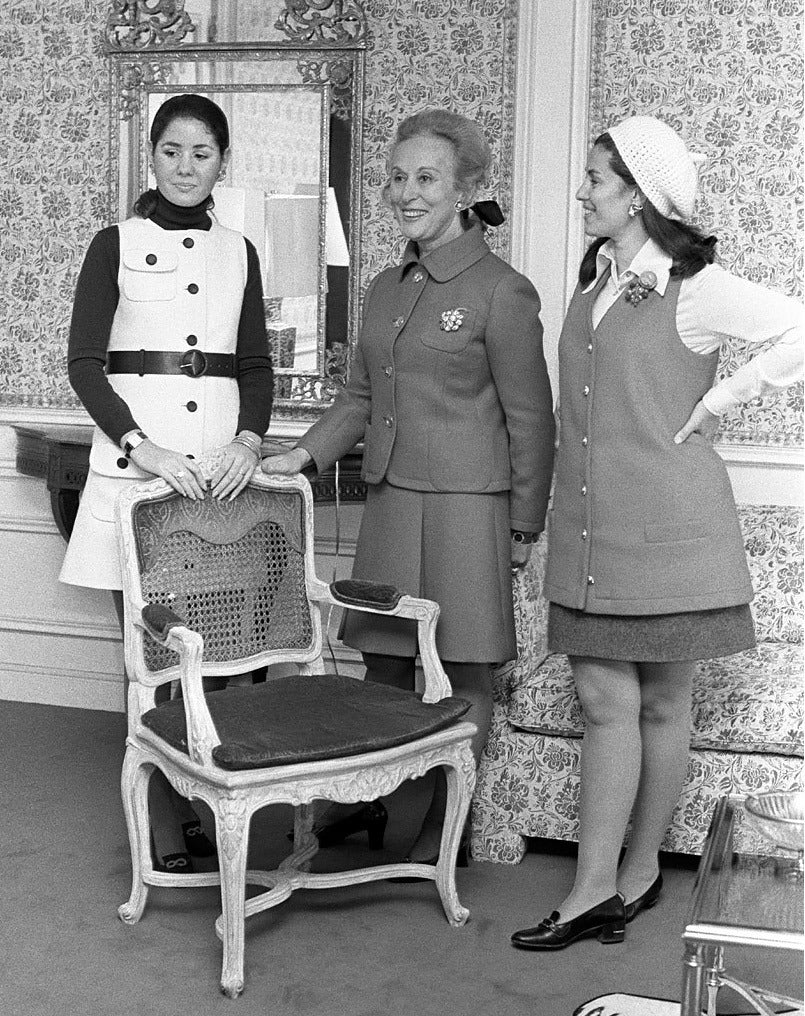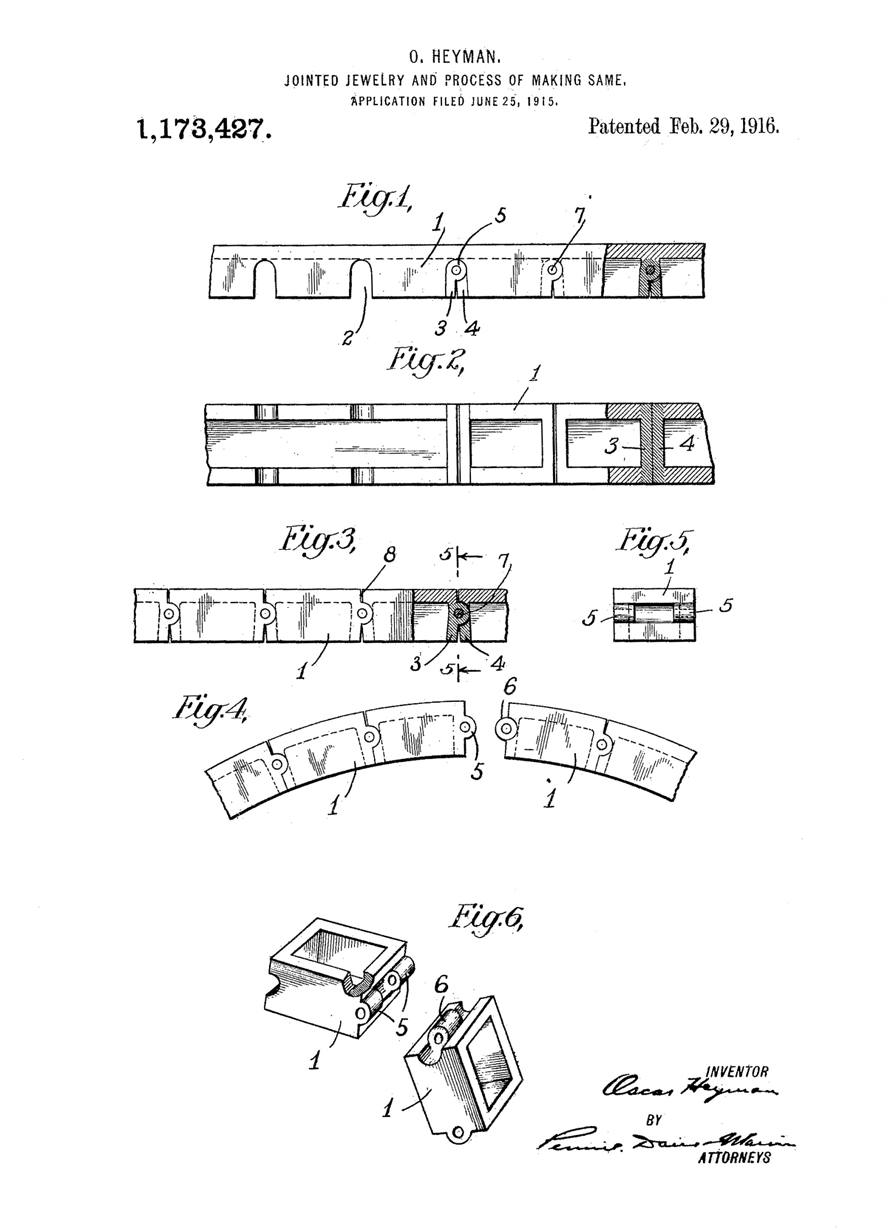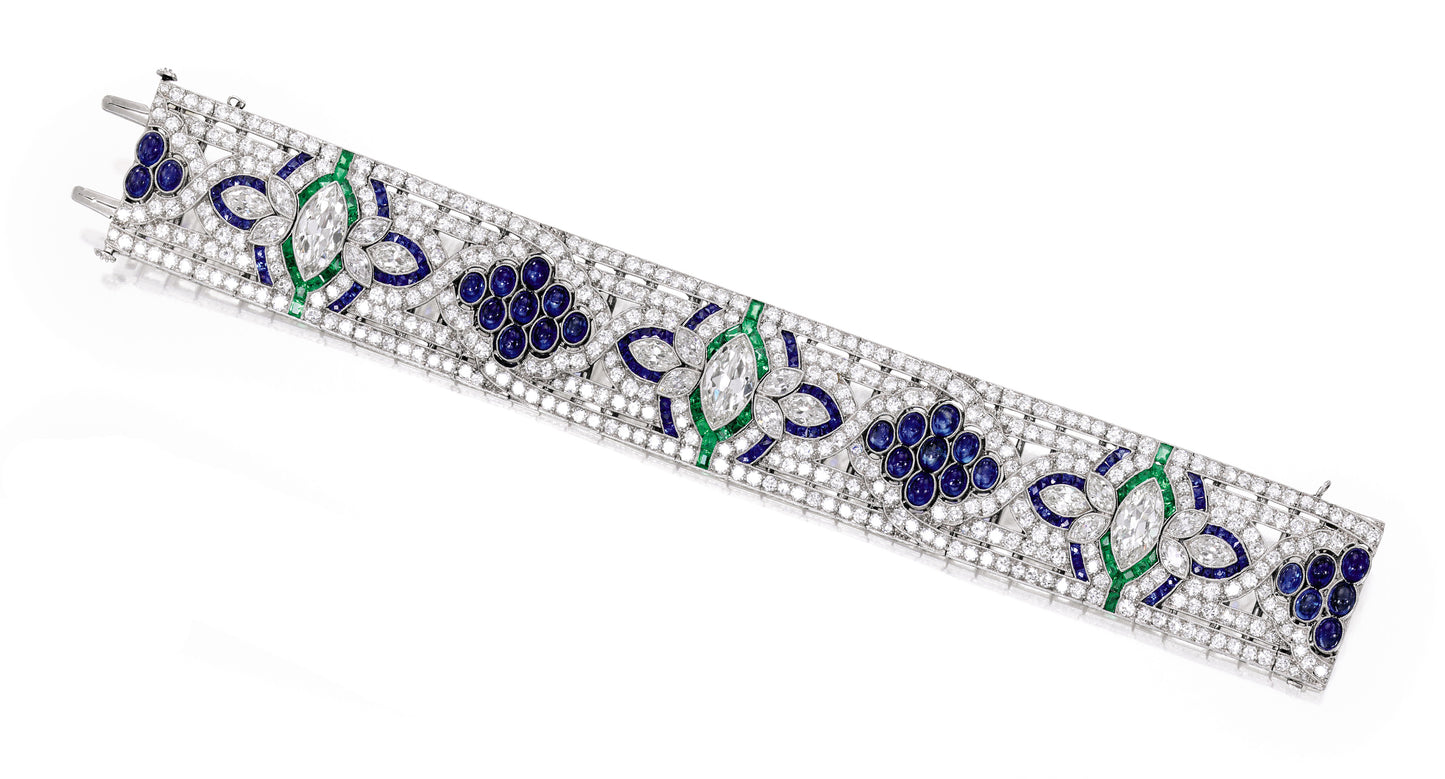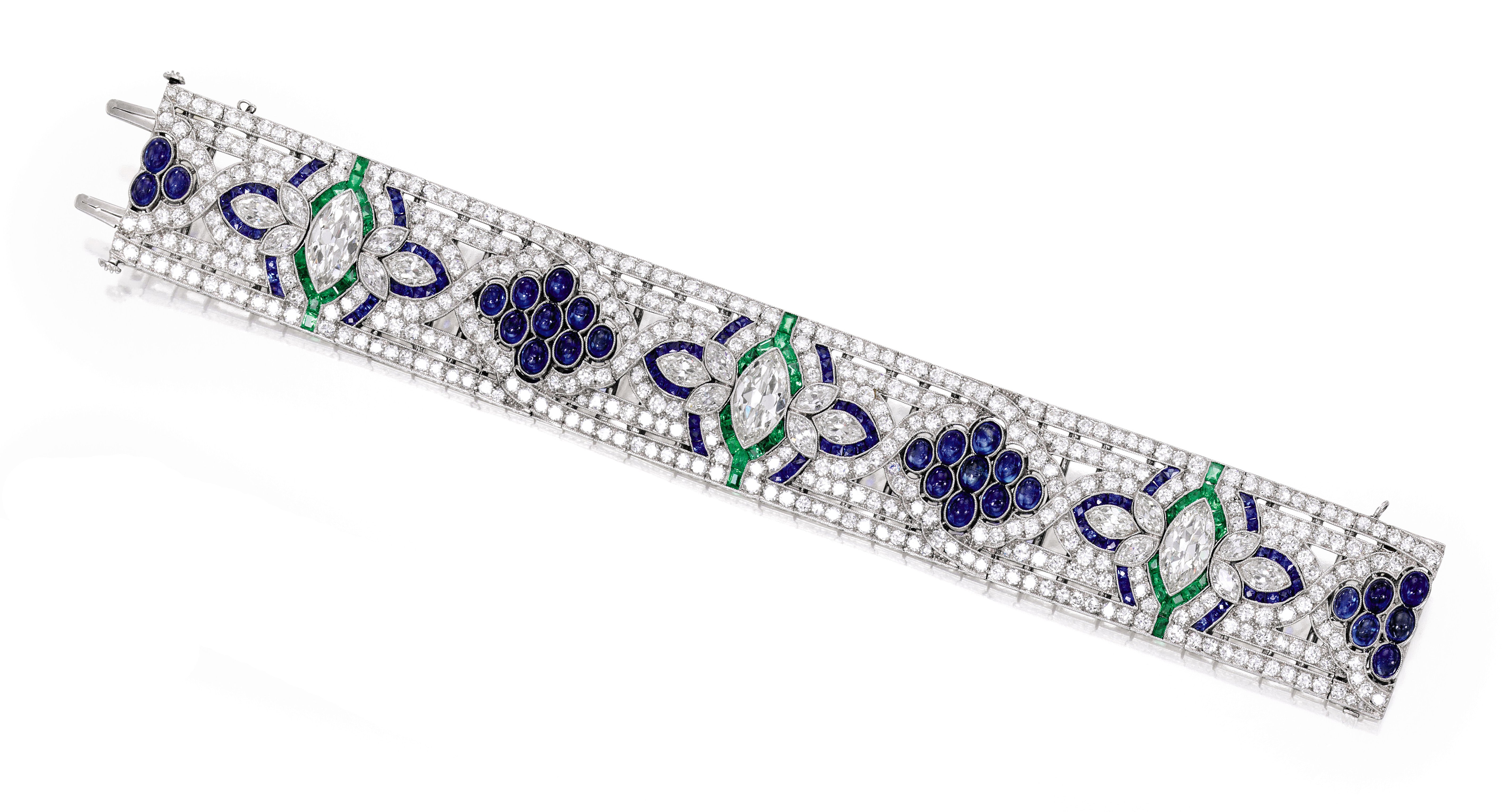
Jo Carole, Estée, and Evelyn Lauder in 1969. By this time, Evelyn had been married to Leonard for 10 years. When she joined the company, after being a New York City school teacher, it was a small family business. By the time this photo was taken, development on Clinique had just started and Evelyn named the line and was integral to its development.

The patent by Oscar Heyman referred to by the stamp on the bracelet (PAT FEB 29–1916) covers improvements in making jointed jewelry.
ART DECO PLATINUM, DIAMOND, SAPPHIRE, AND EMERALD BRACELET BY OSCAR HEYMAN & BROTHERS, NEW YORK, CIRCA 1925
ART DECO PLATINUM, DIAMOND, SAPPHIRE, AND EMERALD BRACELET BY OSCAR HEYMAN & BROTHERS, NEW YORK, CIRCA 1925
SOLD
A bracelet of openwork design, set with three marquise-shaped diamonds outlined with calibré-cut emeralds and accented by smaller marquise-shaped diamonds creating a foliate form outlined by calibré-cut sapphires, with a diamond motif set with cabochon sapphires between each foliate form, the ground set with round, old European and single-cut diamonds in overlapping lines that wrap the central motifs
- 3 marquise-shaped diamonds, weighing approximately 1.95, 1.80 and 1.80 carats
- 18 marquise-shaped diamonds, total weighing approximately 6.30 carats
- Round and single-cut diamonds, total weighing approximately 15 carats
- 27 cabochon sapphires
- 90 calibré-cut sapphires
- 18 calibré-cut emeralds
- Stamped PAT FEB 29 – 1916, with indistinct numbering, and with maker's mark
- Length: 7 inches
Additional cataloguing
Provenance
- Evelyn H. Lauder
Biography
Oscar Heyman & Brothers has been one of the foremost American jewelry makers since the company’s inception in 1912. Brothers Oscar, Nathan, and Harry learned jewelry making in Russia supplying objects to Fabergé. They have created jewelry for some of the foremost retailers including Cartier, Shreve & Co., Neiman Marcus, and many others. Every jewel is made start to finish in their workshops. The firm continues today with the third generation of Heymans.
Significance
While the Art Deco movement began in France, its exuberant spirit quickly made its way to America greatly influencing architecture, fashion, art, and jewelry design. In this period of social and artistic change skyscrapers began to pierce city skylines, Cubism influenced the geometry of artistic movements, and women’s fashion became more revealing and modern. Abandoning the literal floral motifs of the past, American jewelry houses gravitated towards the bold, geometric, and colorful designs that were making their way from Europe. American firms such as Tiffany & Co., Marcus & Co. and most notably Oscar Heyman & Brothers began creating pieces that were innovative and stylish. Having trained under such venerable craftsman as Fabergé and Cartier, Oscar and Nathan Heyman started the firm Oscar Heyman & Brothers just prior to the Art Deco movement and soon began creating stunning jewels to reflect this new modern movement.
This bracelet is a magnificent example of American Art Deco by Oscar Heyman & Brothers. Some of the most exciting jewels during this period were in bracelet form asthe linear shape of a bracelet emphasized the bold geometry. This bracelet is a wide articulated strap of abstract foliate form pierced in platinum with vivid colored sapphires and emeralds in fluid and symmetrical forms then accented by round and marquise-shaped diamonds. The bracelet is beautifully articulated due to the innovative construction of the links designed by Oscar Heyman & Brothers that was patented in 1916. This specific patent discusses the innovative method in which the links are attached with integrated bar hinges within the center of the links.
Formerly owned by Evelyn H. Lauder, this bracelet was part of a well-curated jewelry collection. Lauder came from a humble background having fled Europe during World War II, eventually finding her way to New York City and in 1959 marrying Leonard A. Lauder. She became Senior Corporate Vice President and Head of Fragrance Development Worldwide for Estée Lauder Companies Inc., and her career lasted more than 50 years. She is most notably know for her public work with bringing global awareness to women’s health and co-creating the Pink Ribbon campaign to support breast cancer research.
Jewels of this caliber and provenance are incredibly rare and highly sought after today. Few design movements have greatly impacted a generation worldwide like that of the ArtDeco movement and still remain stylish and modern today. This bracelet is a remarkable example of the creative enduring spirit of its time.

Jo Carole, Estée, and Evelyn Lauder in 1969. By this time, Evelyn had been married to Leonard for 10 years. When she joined the company, after being a New York City school teacher, it was a small family business. By the time this photo was taken, development on Clinique had just started and Evelyn named the line and was integral to its development.

The patent by Oscar Heyman referred to by the stamp on the bracelet (PAT FEB 29–1916) covers improvements in making jointed jewelry.







